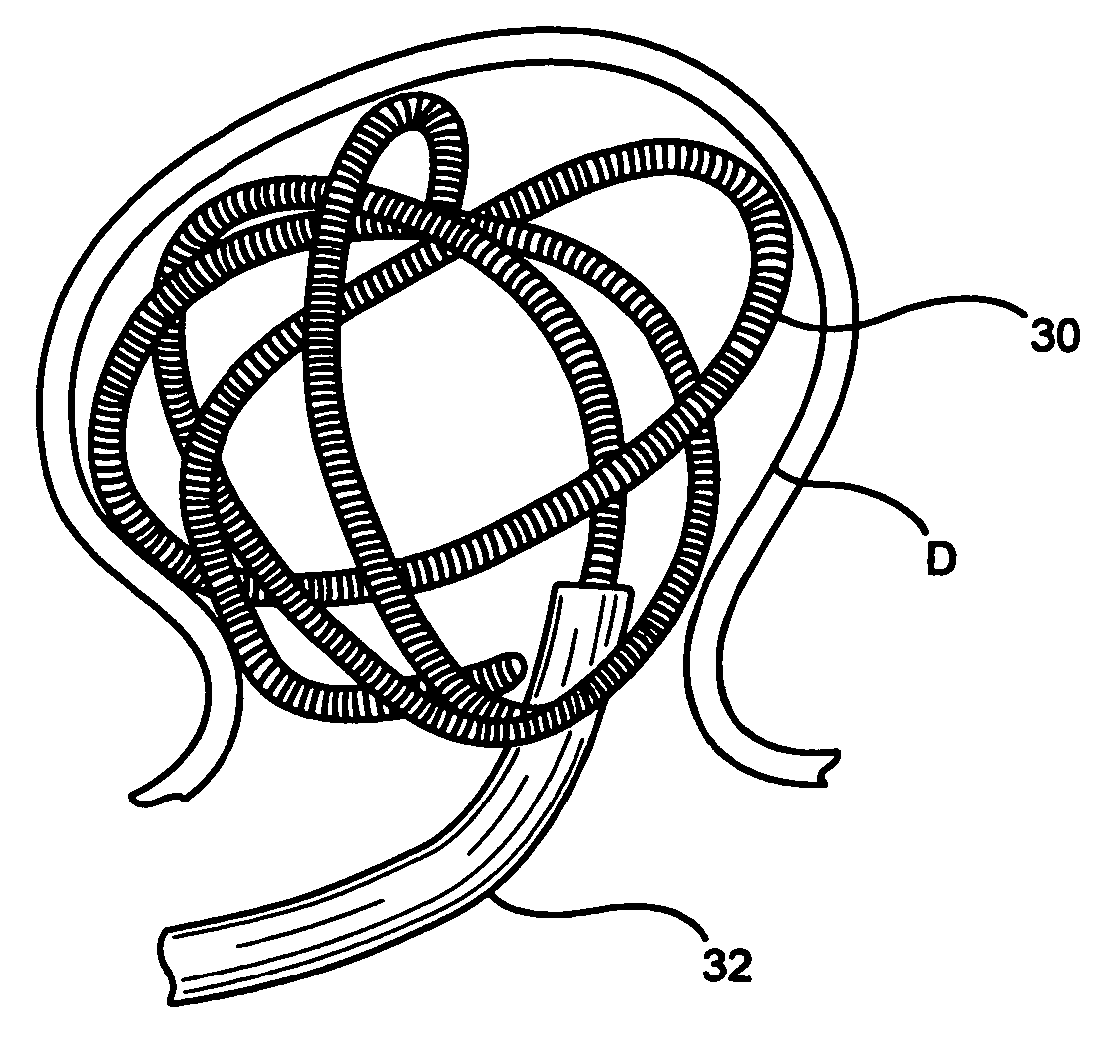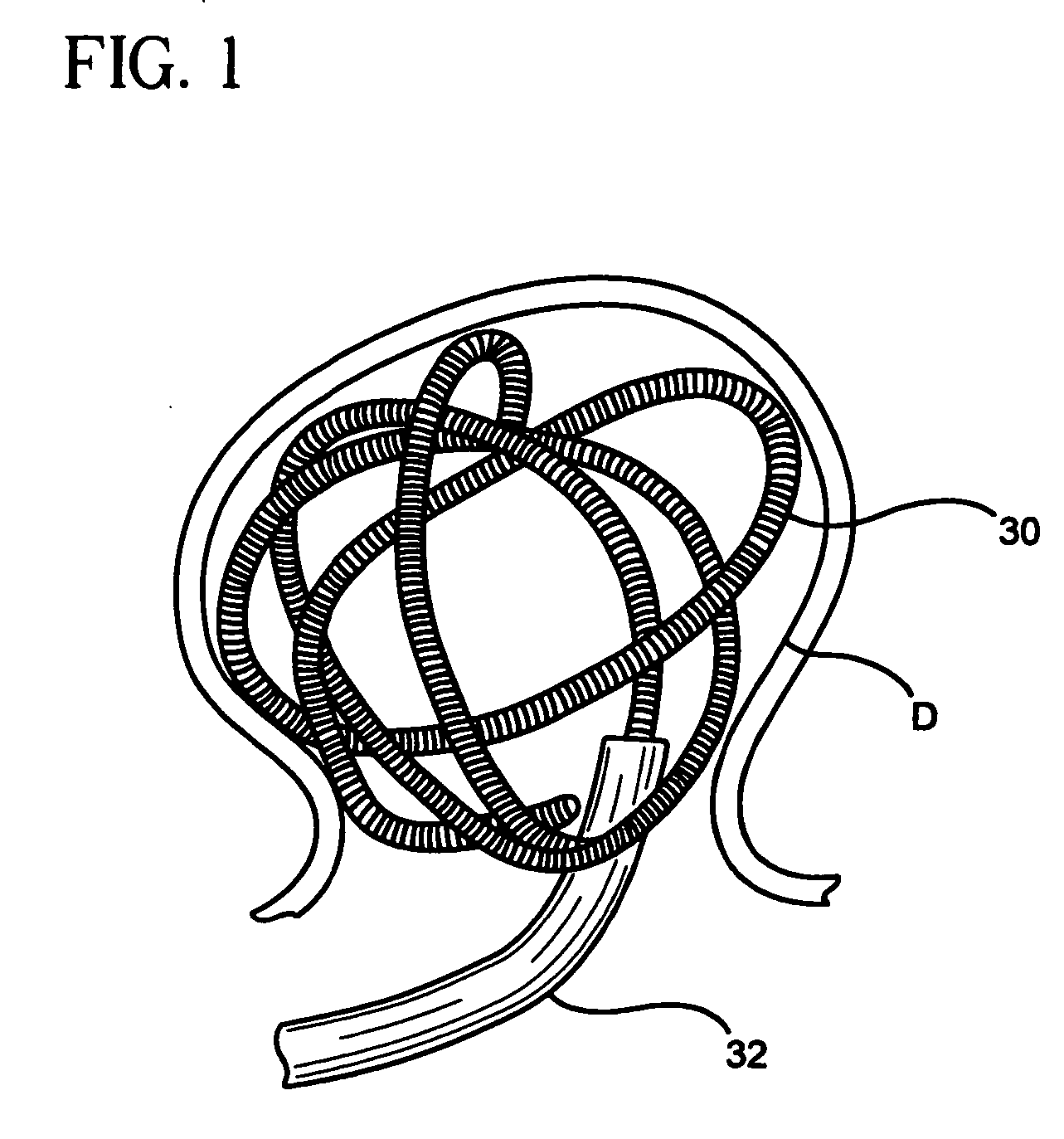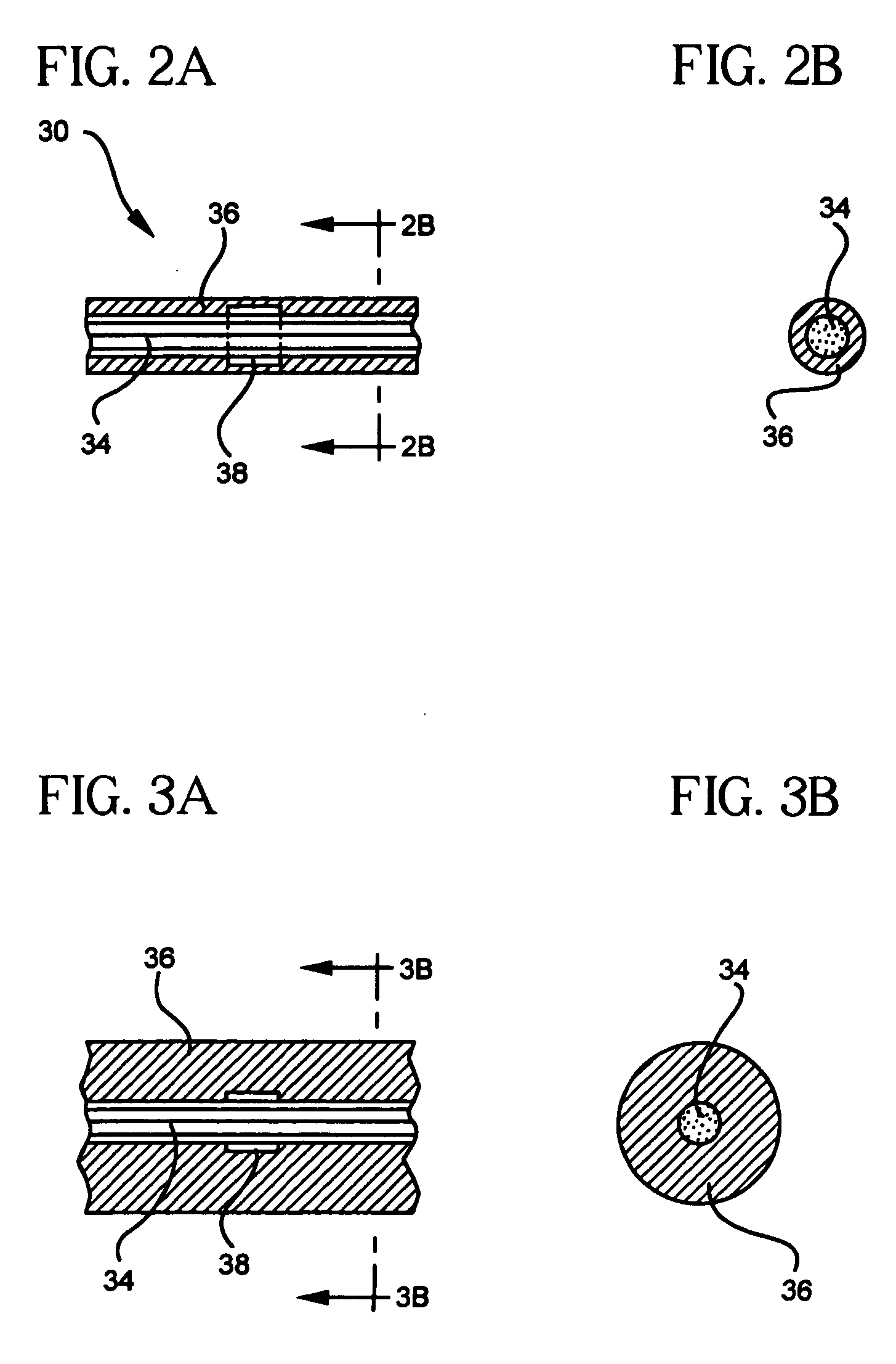Methods of, and materials for, treating vascular defects with magnetically controllable hydrogels
a magnetically controlled hydrogel and vascular defect technology, applied in the field of methods and equipment for treating vascular defects, can solve the problems of injurious pressure, inability to treat vascular defects, and inability to effectively treat vascular defects,
- Summary
- Abstract
- Description
- Claims
- Application Information
AI Technical Summary
Problems solved by technology
Method used
Image
Examples
first embodiment
[0049] In a first construction of the embolization device of the first embodiment shown in FIGS. 2 and 3, the carrier 34 is a flexile, fibrous filament. The expansile element 36 is a coating of an expansile polymer on all or substantially all of the carrier 34. The magnetic material is in the form of one or more magnet elements 38 on the carrier 34. the magnet element(s) 38 can be a ring (or other shape) of a permanent magnetic material, such as a Nd—Fe—B alloy, or it can a ring (or other shape) of a permeable material, such as hiperco. The device 30 of FIG. 2 can be introduced into a vascular defect, such as an aneurysm, through a microcatheter 32, and held in place with the application of a magnetic gradient. Once in the vascular defect, the expansile element 36 expands, as shown in FIG. 3, filling and occluding the vascular defect. This allows clots to form in the defect, eventually completely filling and blocking the defect. Eventually, epithelial cells will grow over the occlus...
second embodiment
[0054] In accordance with this invention, an expandable embolization device can expand from a initial size and shape, to a size and shape designed to fit or substantially fit the vascular defect. Such a device might have an initial configuration in which it is in the form of a model of the vascular defect, and the device is then compressed from this initial configuration into a compressed configuration, but is expansible from the compressed configuration into an expanded configuration substantially conforming to the shape and size of the vascular defects. The device preferably includes at least one magnetically responsive element therein capable of aligning the device in an applied magnetic field of at least 0.05T.
[0055] In a second embodiment of the invention, an embolic device comprises an embolic material comprises an expansible hydrogel body with a magnetically responsive material associated therewith. The magnetically responsive material preferably creating a pulling force of a...
third embodiment
[0058] An embolic material in accordance with this invention generally comprises magnetically responsive particles coated with an expansile material. As shown in FIG. 12, the embolic material preferably comprises a plurality of such particles, which may be included in fluid carrier, as is known in the art. As shown in FIG. 12, a core consisting of one or more particles 100 of magnetically responsive material are at least partially coated with a layer 102 of expansile material, such as the hydrogel discussed above. The cores 100 are preferably made of a magnetically responsive material, such as magnetite (Fe3O4). The cores 100 could also be hematite (Fe2O3), cobalt, iron, mixtures or alloys thereof, or other magnetic particles which could be made biologically compatible, for example with coatings. The magnetic particles preferably comprise magnetic bodies, preferably made of a permeable magnetic material, such as the iron oxides magnetite (Fe3O4) or maghemite (Fe2O3), or ferrites of ...
PUM
 Login to View More
Login to View More Abstract
Description
Claims
Application Information
 Login to View More
Login to View More - R&D
- Intellectual Property
- Life Sciences
- Materials
- Tech Scout
- Unparalleled Data Quality
- Higher Quality Content
- 60% Fewer Hallucinations
Browse by: Latest US Patents, China's latest patents, Technical Efficacy Thesaurus, Application Domain, Technology Topic, Popular Technical Reports.
© 2025 PatSnap. All rights reserved.Legal|Privacy policy|Modern Slavery Act Transparency Statement|Sitemap|About US| Contact US: help@patsnap.com



